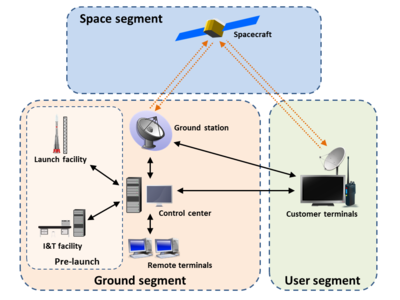Thrilled News in satellite industry in India
Global Konet and Digisat India have partnered to bring innovative satellite solutions to India. Global Konet's products, such as their phased flat satellite antennas and GU24 IoT terminal, offer advanced features like compact design, high performance, and reliability. Their technology seems suitable for various applications, including maritime, drone operations, and mobility solutions. This partnership could enhance satellite communication services in India.
News Bulletin From Digisat Pune Studio
Internship Program 2025-2026
Hi. Krish here Ceo of Digisat Skill India Pvt Ltd 3/ 2 IT park kharadi pune. My 1st appeal to all please log on www.digisat.in for opportunity to Internship programm enrollments has began for final year studants
Revolutionary Network
Starlink, backed by Elon Musk's SpaceX, has received approval to operate in India. With a GMPCS license from the Department of Telecommunications (DoT), Starlink will provide high-speed internet access to remote locations using low Earth orbit satellites.
Launch of 23 New Satellites
Elon Musk's recent launch of 23 new Starlink satellites, including 13 with Direct to Cell capabilities, sets the stage for the service's entry into India, expected in January 2025. This development poses a significant challenge to existing telecom giants like Mukesh Ambani's Reliance Jio.
Ground Segment
A ground segment consists of all the ground-based elements of a space system used by operators and support personnel, as opposed to the space segment and user segment. The ground segment enables management of a spacecraft, and distribution of payload data and telemetry among interested parties on the ground. The primary elements of a ground segment are:
- Ground (or Earth) stations, which provide radio interfaces
- Mission control (or operations) centers, from which spacecraft are managed
- Remote terminals, used by support personnel
- Spacecraft integration and test facilities
- Launch facilities
- Ground networks, which allow for communication between the other ground elements
Space Segment
The space segment of an artificial satellite system is one of its three operational components (the others being the user and ground segments). It comprises the satellite or satellite constellation and the uplink and downlink satellite links.
The overall design of the payload, satellite, ground segment, and end-to-end system is a complex task. Satellite communications payload design must be properly coupled with the capabilities and interaction with the spacecraft bus that provides power, stability and environmental support to the payload.
Global Vsat Network
Syllabus of Vsat Network
- 4 hrs per day
- 100 hrs(25days)
- Design work in progress
- 5 days PPT
- 1 day internal Examination theory and practical
- Total 25 days
Concept of Vsat Network
- How system work, how satellite and ground network and equipments uses, complete Block schematics explaination of each parts and equipment Software system system integration and Commissioning
- Actual live test set up in house at skill center
- Why globally more popularity of vsat Network
- Uses Globally for communications as for Data/ Voice/ Video Applications and physically awareness of BOM hardware
- 6 days in house practical
- 12 days field work practicals to acequired all skills of system integration cableing, testing on satellite
- Complete awareness of Tools and measurements equipment
Schemes for Higher Education Youth for Apprenticeship & Skills(AI & IoT)
Silent features:
Add-on Apprenticeship
The students who are currently completing the degree programme would be invited to choose a job role of their choice from a selected list of apprenticeship job roles given by the Sector Skill Councils of the MoSDE. The apprenticeship programme is normally about (6) months and would be prefixed by basic training regarding the sector (theory). The programme would commence immediately after completion of the degree programme (Starting from May each year). During the apprenticeship period, the student would get a monthly stipend of about Rs. 6,000 per month by the industry. At the end of the apprenticeship period, there would be a test conducted by the Sector Skill Council concerned and successful students would get skills certificate in addition to their degree certificate.
Embedded Apprenticeship
Under this approach,the existing B.Vocprogrammes would be restructured into B.A (Professional), B.Sc (Professional) or B.Com (Professional) courses - which would include not only educational input, vocational input, but also a mandatory apprenticeship ranging from 6 to 10 months depending on the requirement of the skill. For example, a BBA course in Logistics would have one semester of classroom teaching and the next one as apprenticeship. Alternatively, one full semester of an existing degree or B.Voc course would be dedicated to apprenticeship with industry.
During the apprenticeship period, the student would get a monthly stipend of about Rs. 5,000 per month by the industry, 25% of which would be reimbursed under the NAPS programme. At the end of the apprenticeship period, there would be test conducted by the Sector Skill Council concerned and successful students would get skills certificate in addition to their degree certificate. The process of embedding apprenticeship & skill content into them, or modify the curriculum of existing degree courses to reduce classroom content and incorporate basic skill training with apprenticeship is currently underway with participation of the Sector Skill Councils and it is expected that these courses would be launched from academic year 2018-19.
Linking National Career Service with Colleges
Under this, the National Career Service (NCS) portal of Ministry of Labour & Employment would be linked with the Higher Education institutions. As of now, more than 9,000 employers have posted requirement of more than 2 lakh vacancies, for which the students can get considered. This would help students in institutions which do not have the facility of campus recruitment and would improve their employment opportunities. Apart from this, the students would be trained in soft skills required by the market.
Artificial Intelligence in Satellite Telecommunications
Artificial intelligence (AI) plays a significant role in various aspects of satellite telecommunications. Here are some areas where AI is employed in satellite telecommunications:
Satellite Operations: AI is used to automate and optimize satellite operations. It can assist in monitoring and controlling satellite systems, including satellite health monitoring, orbit control, and resource management. AI algorithms can analyze large volumes of telemetry data and make intelligent decisions to improve the efficiency and reliability of satellite operations.
Signal Processing: AI techniques are used for advanced signal processing in satellite communications. For example, AI algorithms can enhance the quality of received signals, mitigate interference, and improve the overall performance of communication links. Machine learning algorithms can adaptively learn and optimize signal processing parameters based on real-time conditions, leading to better throughput and reliability.
Spectrum Management: AI can aid in efficient spectrum management in satellite telecommunications. With the increasing demand for wireless communication services, optimizing the allocation and usage of available frequency bands is crucial. AI algorithms can analyze historical data, predict usage patterns, and dynamically allocate frequencies to different satellite systems, maximizing spectrum utilization.
Antenna Systems: AI is utilized in antenna systems to optimize beamforming and tracking. Satellite antennas equipped with AI algorithms can dynamically adjust their beam patterns based on traffic demands, environmental conditions, and interference sources. This allows for efficient transmission and reception, improved coverage, and enhanced link quality.
Network Optimization: AI can optimize satellite network architecture and performance. By analyzing network traffic patterns, AI algorithms can identify bottlenecks, predict congestion, and dynamically route traffic to minimize latency and maximize throughput. This helps in delivering better quality of service (QoS) and meeting the demands of diverse applications.
Earth Observation and Data Analysis: Satellites equipped with AI can analyze Earth observation data for various purposes. AI algorithms can process and interpret satellite imagery, identify objects, detect changes in the environment, monitor natural disasters, and support applications such as precision agriculture, urban planning, and environmental monitoring.
Predictive Maintenance: AI can enable predictive maintenance for satellite systems. By analyzing sensor data and historical maintenance records, AI algorithms can predict equipment failures, detect anomalies, and recommend maintenance actions. This proactive approach helps to minimize downtime, reduce costs, and improve the overall reliability of satellite systems.
Overall, AI brings significant benefits to satellite telecommunications, enabling improved efficiency, reliability, and performance of satellite systems across various aspects of operation, communication, and data analysis.
IoT (Internet of things)
Satellite IoT refers to the use of satellite communication networks and services to connect terrestrial IoT sensors and IoT end-nodes to a server (e.g., in a public or private cloud), either in conjunction with or as an alternative to terrestrial communication networks.
Solar Power
Solar energy can be used mainly in three ways one is direct conversion of sunlight into electricity through PV cells, the two others being concentrating solar power (CSP) and solar thermal collectors for heating and cooling (SHC). India is endowed with abundant solar energy, which is capable of producing 5,000 trillion kilowatts of clean energy. Country is blessed with around 300 sunny days in a year and solar insolation of 4-7kWh per Sq. m per day.




